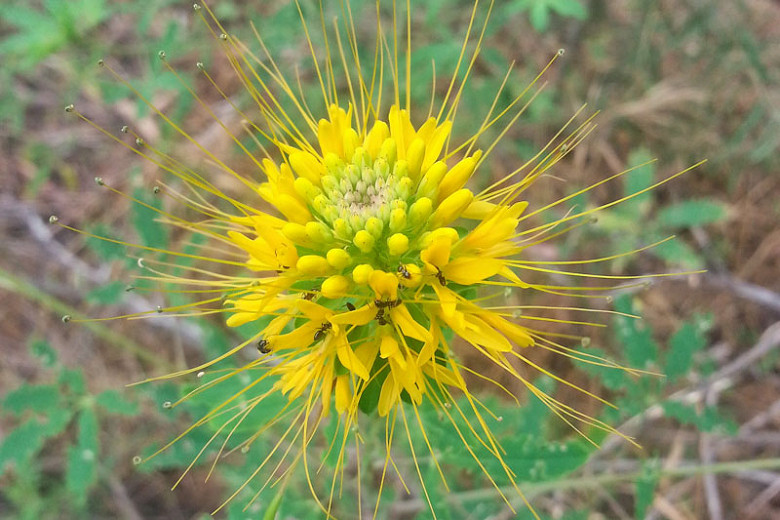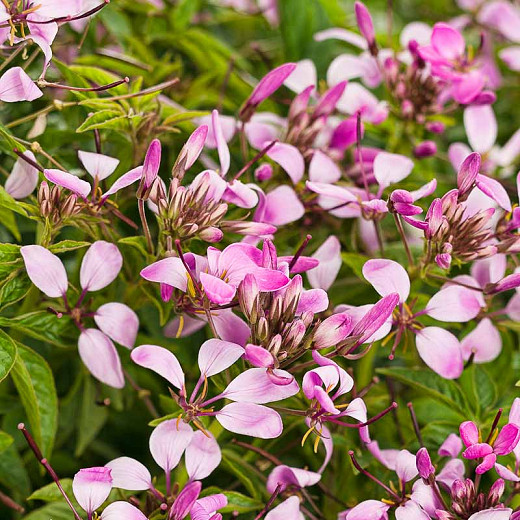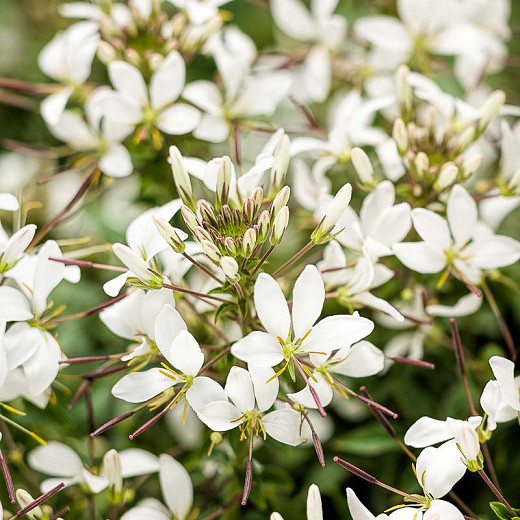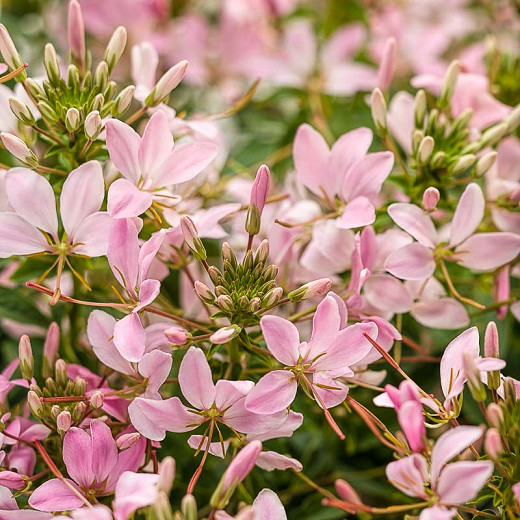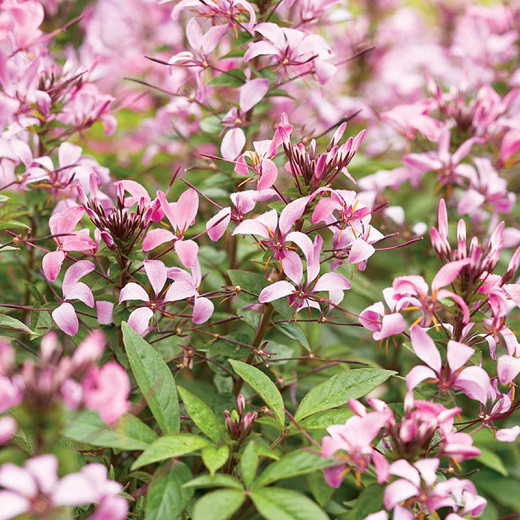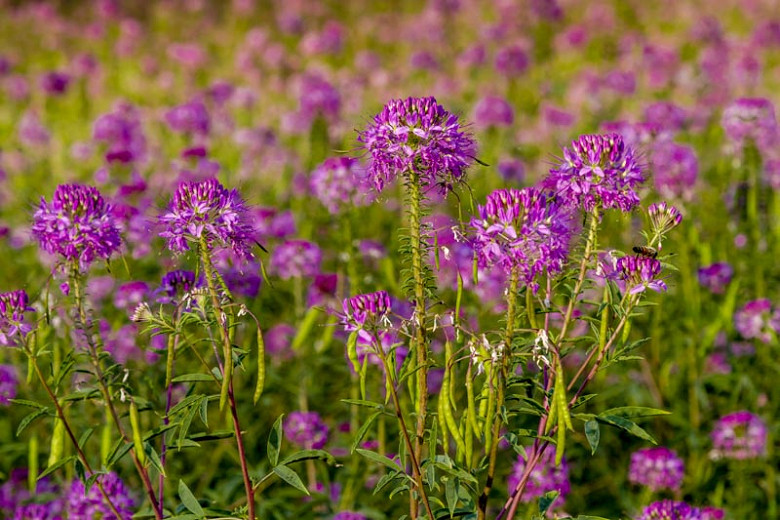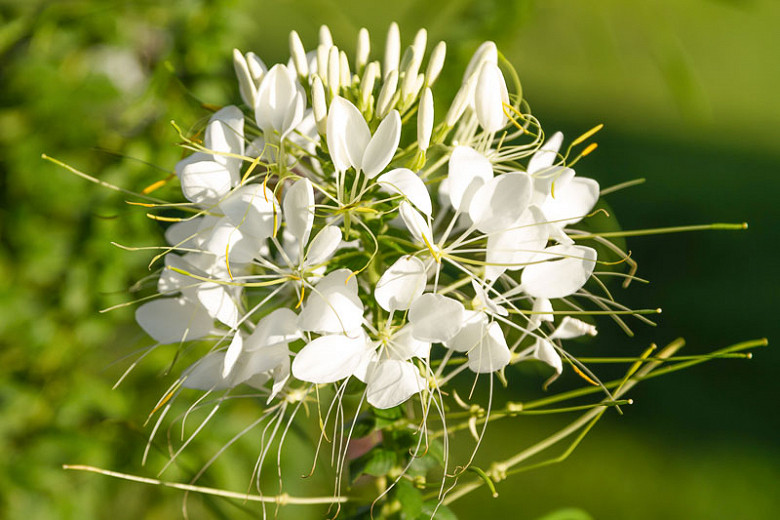Cleome lutea (Yellow Beeplant)
Cleome lutea (Yellow Beeplant) is a fast-growing annual plant boasting showy terminal racemes, up to 16 in. (40 cm), densely packed with yellow flowers with long yellow stamens that radiate from each flower and protrude out. The nectar-filled blossoms attract a diverse array of pollinators, including native bees, wasps, and butterflies. Blooming over a reasonably long period, from late spring until late summer, depending on location and elevation, the flowers rise atop erect stems that are simple or with a few branches developing from the upper leaf axils. They are lined with alternate, widely spaced, palmately compound leaves. The flowers give way to pointed seed pods, up to 1.5 in. long (4 cm), that dangle from short stalks. The flowers and seed pods can appear on the stem at the same time, which adds to the charm and interest of the plant. Noted for its attractive and long-lasting flowers and bright color, low water needs, drought tolerance, Yellow Beeplant can be planted in sunny gardens with medium-textured soils. It is recommended for wildflower gardens and pollinator gardens as it provides resources for many native bees and other insects over its long flowering period. It is also valuable for use in naturalizing and beautifying projects. Give it plenty of room to spread.
- Grows up to 1-5 ft. tall (30-150 cm). Will spread quickly from seed and may develop large colonies.
- Performs best in full sun in medium-textured, dry to moist, well-drained soils. Drought tolerant once established.
- Yellow Beeplant is an ideal addition to cottage gardens, pollinator gardens, wildflower gardens, and naturalized areas.
- Propagate by seed. Seed requires a cold stratification or vernalization period to germinate.
- Generally pest or disease free. Keep an eye out for powdery mildew, western cabbage flea beetles.
- Promptly remove the seed pods if self-seeding is not desired.
- Native to western North America, Baja California, Mexico.
Requirements
| Hardiness | 3 – 8 |
|---|---|
| Plant Type | Annuals |
| Plant Family | Cleome – Spider Flowers |
| Exposure | Full Sun |
| Season of Interest | Spring (Late)Summer (Early,Mid,Late) |
| Height | 1' – 5' (30cm – 150cm) |
| Water Needs | Low, Average |
| Maintenance | Low |
| Soil Type | Loam, Sand |
| Soil pH | Acid, Alkaline, Neutral |
| Soil Drainage | Moist but Well-Drained, Well-Drained |
| Characteristics | Showy |
| Native Plants | United States, California, Midwest, Nebraska, Pacific Northwest, Idaho, Oregon, Washington, Rocky Mountains, Colorado, Montana, Utah, Wyoming, Southwest, Nevada, Arizona, New Mexico |
| Tolerance | Drought |
| Attracts | Bees, Butterflies |
| Garden Styles | Informal and Cottage, Prairie and Meadow |
